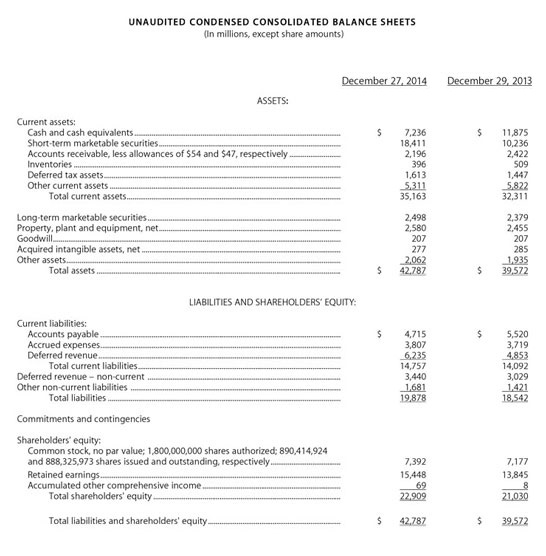
In financial accounting, a balance sheet or statement of financial position is a summary of a person’s or organization’s balances. Assets, liabilities and ownership equity are listed as of a specific date, such as the end of its financial year. A balance sheet is often described as a snapshot of a company’s financial condition. Of the four basic financial statements, the balance sheet is the only statement which applies to a single point in time.
A company balance sheet has three parts:
- Assets
- Liabilities
- Ownership equity
The main categories of assets are usually listed first, and typically in order of liquidity. Assets are followed by the liabilities. The difference between the assets and the liabilities is known as equity or the net assets or the net worth or capital of the company. According to the accounting equation, net worth must equal assets minus liabilities:
Net Worth = Assets – LiabilitiesAnother way to look at the same equation is that assets equal liabilities plus owner’s equity. Looking at the equation in this way shows how assets were financed: either by borrowing money (liability) or by using the owner’s money (owner’s equity). Balance sheets are usually presented with assets in one section and liabilities and net worth in the other section with the two sections “balancing.”
Records of the values of each account in the balance sheet are usually maintained using a system of accounting known as the double-entry bookkeeping system.
A business operating entirely in cash can measure its profits by withdrawing the entire bank balance at the end of the period, plus any cash in hand. However, many businesses are not paid immediately; they build up inventories of goods and they acquire buildings and equipment. In other words: businesses have assets and so they can not, even if they want to, immediately turn these into cash at the end of each period. Often, these businesses owe money to suppliers and to tax authorities, and the proprietors do not withdraw all their original capital and profits at the end of each period. In other words businesses also have liabilities.
